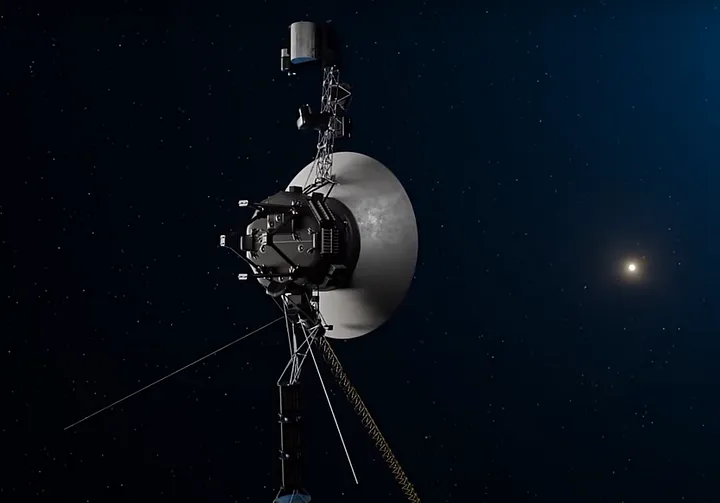Software maintenance of the Voyager probes: a remarkable feat of human ingenuity and curiosity
The Voyager 1 and 2 probes, launched in 1977 by NASA, are remarkable achievements of human exploration and science. They have visited four giant planets of the solar system and beyond, and have sent back invaluable data and images that have revolutionized our understanding of these worlds. However, these probes are also relics of a bygone era of technology, and they face many challenges and limitations as they continue their journey into the unknown.
One of the main challenges is the outdated computer systems that control the probes. The Voyager probes use plated wire memories to store their binary data. These are non-volatile storage devices, which means they retain the data even when the power is off. This is an advantage for the probes, as they rely on radioisotope thermoelectric generators that produce less and less electricity over time. However, these memories are also very limited in capacity and speed, compared to modern flash memories or hard disks. The Voyager probes have only about 69 kilobytes of memory each, which is less than a single picture taken by a smartphone. Moreover, these memories are prone to errors and corruption, due to the harsh radiation environment of space.
Another challenge is the software that runs on the probes. The Voyager probes are controlled by software written in old programming languages, such as assembly and FORTRAN. These languages are low-level and difficult to read and write, compared to modern languages like Python or Java. They also require a lot of manual coding and debugging, and are not very flexible or adaptable to changing requirements. The software of the Voyager probes is divided into several modules, which can be activated or deactivated according to the needs. For example, some modules are related to the scientific instruments, while others are related to the communication or the navigation of the probes.
The engineers at NASA can send software updates to the Voyager probes, using giant parabolic antennas located on Earth. These updates are sent as binary commands, which must be compatible with the plated wire memories and the software of the probes. However, these updates take a lot of time to reach the Voyager probes, which are at astronomical distances from Earth. For example, it takes about 21 hours for a signal to travel from Earth to Voyager 1, and vice versa. This means that the engineers have to wait for a long time to confirm that the updates have been received and executed correctly by the probes. Moreover, the updates have to be carefully planned and tested, as any mistake could compromise the functioning or the safety of the probes.
The software updates are necessary to fix bugs, optimize performance, extend lifespan and improve scientific capabilities of the probes. For example, in 1990, a software update corrected a pointer problem that caused the flight data system of Voyager 2 to malfunction. In 2017, a software update adjusted the thrusters of Voyager 1, which are used to orient the probe and keep its antenna pointed towards Earth. In 2020, a software update changed the communication mode of Voyager 2, to reduce the power consumption and increase the data rate. In 2021, a software update reactivated some instruments of Voyager 2, such as the ultraviolet spectrometer and the cosmic ray subsystem, which had been turned off to save power.
In conclusion, the Voyager 1 and 2 probes are remarkable examples of human ingenuity and curiosity, but they are also constrained by the limitations of their technology. They require constant monitoring and maintenance from the engineers at NASA, who have to overcome many challenges and difficulties to keep them operational and productive. However, these efforts are worthwhile, as the Voyager probes continue to provide us with unique and valuable information about the outer solar system and the interstellar space. They are also ambassadors of humanity, carrying a message of peace and goodwill to any potential alien civilization that might encounter them. They are truly the pioneers of the final frontier.


Comments
Post a Comment